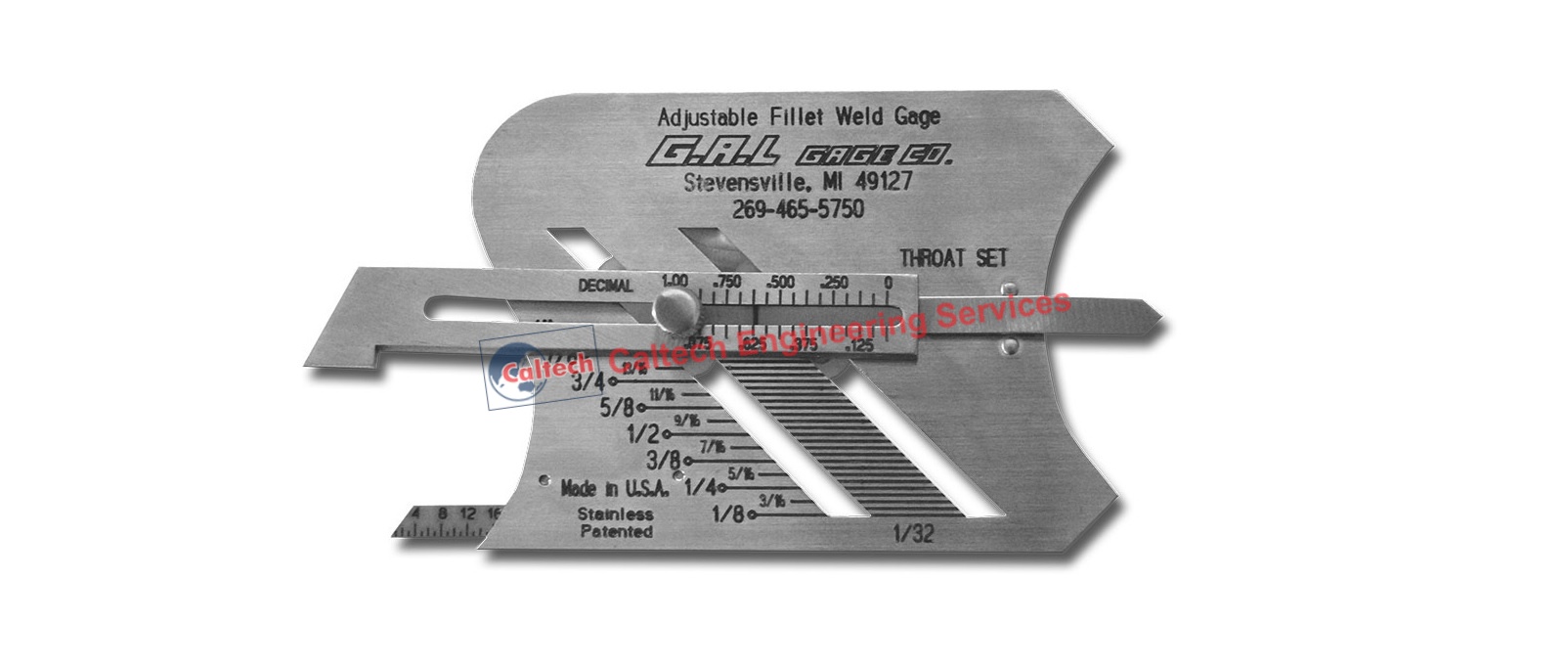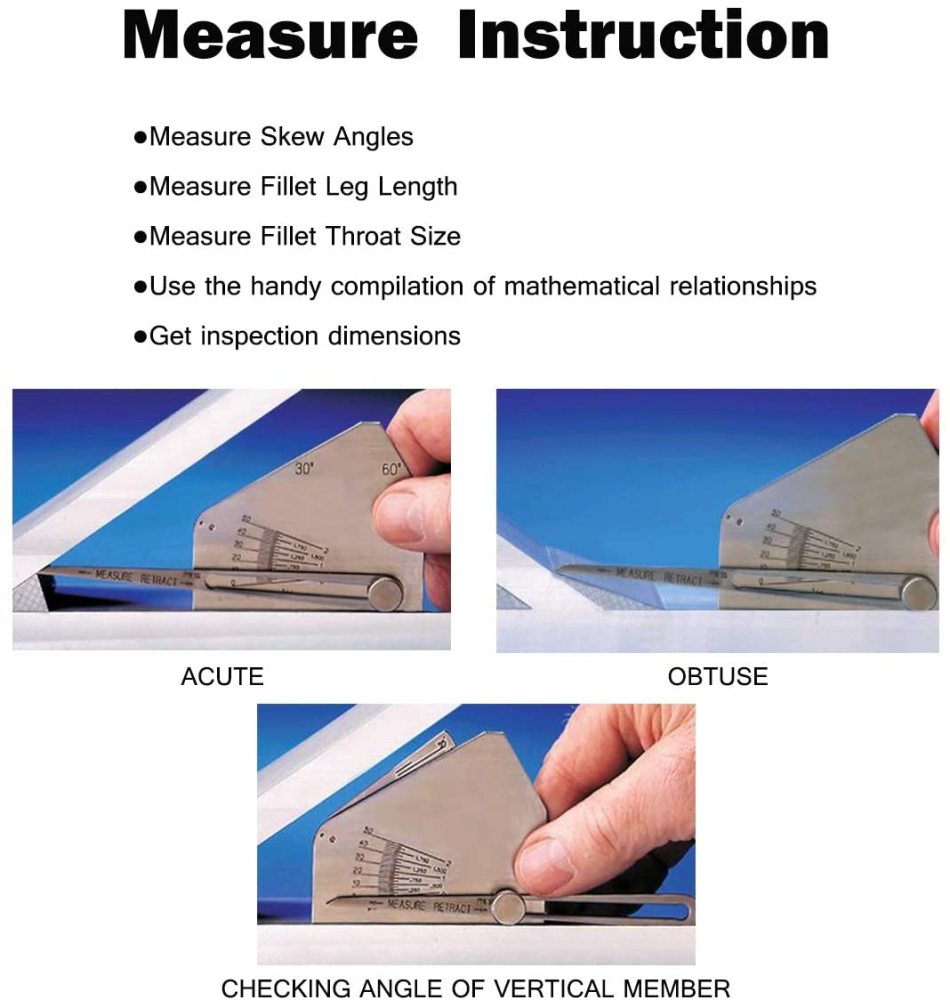Ingenious Strategies to Fillet Weld Examination and Testing: Enhancing Weld Top Quality and Conformity Requirements
In the realm of welding, the high quality and stability of fillet welds play a critical duty in guaranteeing the structural strength and dependability of various industrial elements. With the continuous drive for improved performance and conformity with rigorous criteria, the exploration of ingenious methods to fillet weld assessment and testing has actually become necessary. As sectors evolve, the conventional techniques might no longer suffice in fulfilling the demands of modern-day welding applications (Gauge Fillet Weld). By welcoming innovative modern technologies and methodologies, a new horizon of opportunities emerges in the realm of weld quality analysis and adherence to compliance standards.
Advanced Non-Destructive Screening Approaches
Making use of modern innovations, advanced non-destructive testing approaches play a vital function in ensuring the honesty and quality of fillet welds. These techniques, such as phased array ultrasonic screening (PAUT) and magnetic fragment screening (MPT), offer thorough understandings right into the weld's inner framework without causing any kind of damages to the material. PAUT, as an example, utilizes several ultrasonic components to examine the weld from numerous angles, providing a detailed visualization of prospective problems like absence of blend or cracks.
Likewise, MPT works in discovering surface-breaking flaws by applying an electromagnetic field and iron bits to the weld location. This approach is particularly helpful for determining discontinuities that may jeopardize the weld's strength. By utilizing these advanced non-destructive testing techniques, weld assessors can accurately evaluate the high quality of fillet welds, making certain conformity with sector standards and guidelines. The ability to identify flaws at an early stage not just improves weld quality however likewise prevents pricey rework or failings in structural stability, highlighting the relevance of these ingenious screening techniques in welding assessments.
Robotics and Automation in Examination

The assimilation of robotics and automation has actually transformed the inspection procedure for fillet welds, improving efficiency and precision in quality analysis. Robotics use accurate control and repeatability in evaluating welds, making certain regular and trusted outcomes. Automated systems can be set to follow details assessment paths, making certain complete coverage of welds and lowering the danger of human error.
Robotic inspection systems equipped with advanced sensing units can find and determine weld attributes with high precision, providing in-depth information for analysis. These systems can recognize problems such as fractures, absence of blend, and porosity, making it possible for timely restorative activities to be taken. In addition, robotics and automation permit real-time data collection and evaluation, supplying prompt responses to operators and facilitating fast decision-making procedures.
Furthermore, making use of robotics and automation in fillet weld assessment boosts total productivity by decreasing assessment times and increasing inspection throughput. By streamlining the inspection procedure, manufacturers can ensure weld quality and compliance requirements are met efficiently, ultimately resulting in cost savings and enhanced item quality.
Utilizing Expert System for Evaluation
Man-made intelligence plays an essential duty in enhancing the efficiency and accuracy of evaluation in fillet weld evaluation procedures. AI algorithms can quickly process substantial amounts of information from weld assessments, finding defects or incongruities that may be testing to identify with the naked eye.
In addition, AI systems can learn from previous inspection information, constantly improving their ability to determine prospective flaws and deviations in fillet welds. This flexible learning ability improves the total quality assurance process, minimizing the likelihood of human error and making sure that welds fulfill the needed criteria. By integrating artificial intelligence into fillet weld analysis, markets can accomplish greater levels of effectiveness, consistency, and compliance in their inspection techniques.
Portable Devices for On-Site Inspection
Enhancing area inspection efficiency, the adoption of portable tools revolutionizes on-site evaluation procedures for fillet welds. These devices offer versatility and comfort, enabling assessors to conduct extensive assessments in different locations, including remote or tough settings. Portable tools such as ultrasonic screening tools, magnetic bit inspection equipment, and digital radiography systems give real-time information and high-resolution imaging abilities, allowing quick decision-making and immediate feedback on weld top quality.
One considerable advantage of mobile devices is their capacity to enhance examination procedures, lowering downtime and boosting total efficiency - Gauge Fillet Weld. Assessors can conveniently move these devices to different task sites, removing the requirement for moving hefty machinery or components to off-site centers. Additionally, the portability of that site these devices promotes cost-effectiveness by decreasing transport costs and accelerating examination timelines
Additionally, using mobile devices for on-site evaluation advertises aggressive quality assurance measures, as assessors can immediately recognize and resolve any type of prospective welding defects or disparities. By integrating these innovative technologies right into on-site assessment techniques, welding experts can guarantee compliance with sector standards and improve weld high quality, inevitably causing boosted architectural stability and safety and security in various welding applications.
Assimilation of Data Monitoring Systems

Having actually maximized on-site evaluation procedures with the application of portable devices, the next phase involves the smooth integration of data monitoring systems to further boost performance and information evaluation capabilities in fillet weld examination and testing. By integrating information management systems into the inspection procedure, companies can enhance data collection, storage space, and evaluation. This assimilation enables real-time monitoring of weld quality, prompt recognition of defects, and prompt decision-making to rectify any type of issues that might develop during the examination procedure.
The integration of information monitoring systems makes it possible for smooth communication between different stakeholders entailed in the inspection procedure, cultivating cooperation and improving general top quality control steps. Ultimately, the integration of information administration systems offers to elevate the standards of fillet weld examination and testing, making certain conformity with industry laws and news improving weld high quality.
Final Thought
In conclusion, cutting-edge methods to fillet weld assessment and testing have actually substantially boosted weld top quality and compliance requirements. Advanced non-destructive testing methods, robotics, automation, artificial knowledge, portable devices, and information administration systems have actually reinvented the way weld assessments are conducted. By using these technologies, industries can make certain that welds satisfy the called for high quality criteria and guidelines, eventually boosting overall performance and security in welding procedures.

Having optimized on-site examination procedures via the use of portable devices, the next stage entails the smooth combination of information administration systems to even more enhance effectiveness and data evaluation capacities in fillet weld evaluation directory and screening. Eventually, the assimilation of data administration systems serves to boost the standards of fillet weld inspection and screening, ensuring compliance with industry guidelines and enhancing weld top quality.

Comments on “Mastering Gauge Fillet Welds: Tips for Perfect Measurements and Execution”